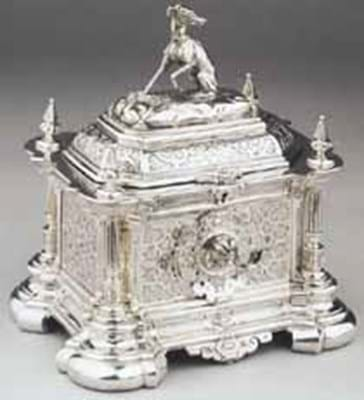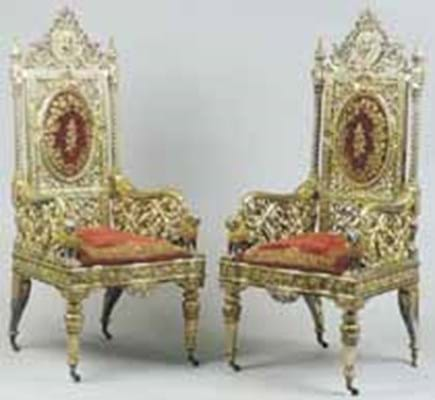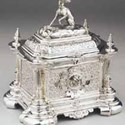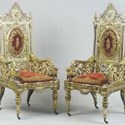Yet one item that certainly raised a few eyebrows in the Sotheby's Amsterdam (22% buyer's premium) Fine Silver auction on May 17 did indeed come from these shores. It was a Queen Anne silver plate by Thomas Ker, made in Edinburgh in 1709, which sold to a private German collector for €16,000 (£10,665), six times the estimate.
The plate was produced for Charles Hope, who had been created the first Earl of Hopetoun six years before it was made. His coat of arms was engraved on the front with the Latin motto At Spes Infracta (Yet my hope is unbroken).
The family history may go some way to explain how this plate ended up in the Netherlands.
Charles Hope was elevated to the peerage by Queen Anne when he came of age in 1703. This was in recognition of the selfless deed of his father, John Hope, who had laid down his life for the Duke of York (the future James II) in the Royal Gloucester shipwreck of 1682 by giving up his seat in the lifeboat to the heir to the throne. The first Earl was largely credited with the building of Hopetoun House, based on designs by Sir William Bruce, where the plate was most likely kept. Yet a later family member, John Hope (1737-1784), was a well-known Dutch banker who became a member of the Council of Amsterdam and ruler of the Dutch East-Indian Company.
Despite this brief British interlude, it was nevertheless a piece of Dutch silver that realised the highest price at the sale. This was €38,000 (£25,335) for a fine pair of Hendrik Swierink tea caddies, Amsterdam 1750, 10.5oz, which sold to the Dutch trade.
A pair of 26.5oz 1764 Dutch silver candlesticks by Gregorius Van Der Toorn also did well, selling to a Belgian private buyer for €17,500 (£11,665).
Although 18th century Dutch items provided the main thrust of the auction, another item that also created a few waves was a fine example of French Art Deco by Parisian silversmith Jean Puiforcat. His silver tableware, with its costly simplicity that won him admirers at the 1925 Paris exhibition, is currently very much in vogue. A figure of €18,000 (£12,000) was achieved for the 75oz, c.1930, rectangular form tureen with cut corners and ivory grips.
It was a silver jewellery casket which had been displayed at the 1851 Great Exhibition at Crystal Palace that made the highest price at Christie's Amsterdam (23.205/11.9% buyer's premium) sale of Dutch and Foreign Silver, Judaica, Russian Works of Art and Objects of Vertu on April 27. The Renaissance Revival 74.5oz casket was made by the Utrecht-based silversmith Johannes Mattheus Van Kempen and designed by Gerardus Willem Van Dokkum. It was secured by a top estimate bid of €80,000 (£53,335).
The sale also saw a rare and early silver-mounted wooden mazer realise €34,000 (£22,665). It was made in the Netherlands, c.1547, and has an unidentified townmark and maker's mark. A fine set of six Dutch silver candlesticks, 119oz, four dated 1801 and two dated 1805, with the mark of Amsterdam's Anton Hinrich Pape, made €65,000 (£43,000), more than four times the top estimate.
A pair of late 19th century Indian parcel-gilt thrones also went well above their €20,000-30,000 estimate. Featuring the traditional seated lions and tigers found on maharajah thrones and here worked into European-style seating, they were taken to €44,000 (£29,335).
The sale totals show that Amsterdam is still a reasonably healthy location for auctioneers. Christie's sold 85.5 per cent of the 268 lots offered, totalling €689,670 (£459,780). Sotheby's 185-lot sale had a 74 per cent take-up for their 185 lots, making a premium-inclusive total of €689,300 (£459,335).
A few shining examples brighten up the Dutch auction scene
IN Amsterdam, if you pay close attention to the silver sales, you occasionally find a British-made object tucked away beneath the massing foliage of prized Dutch cutlery and tableware. It normally sits quietly, not causing much of a stir.








